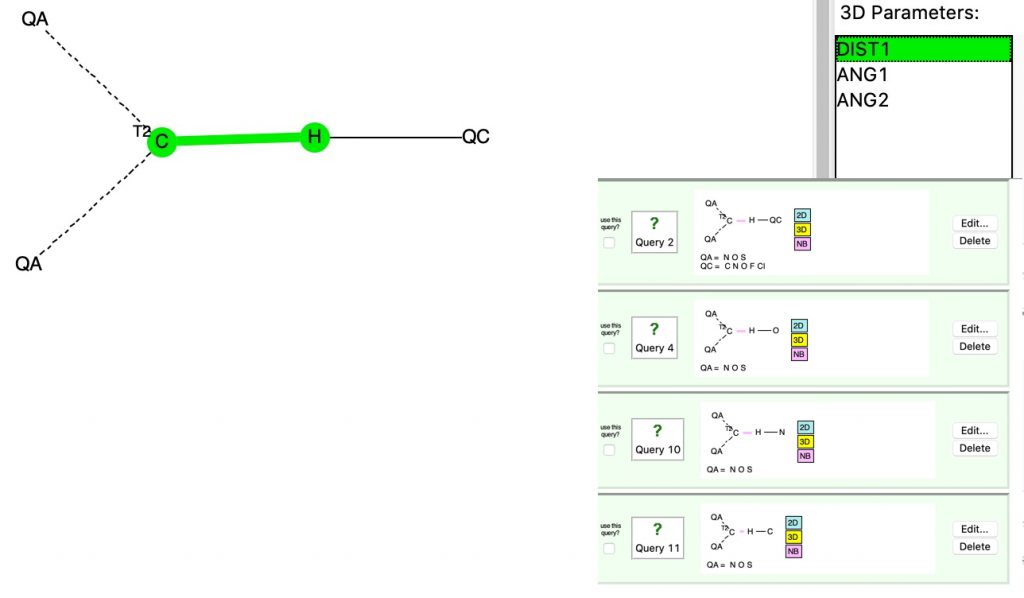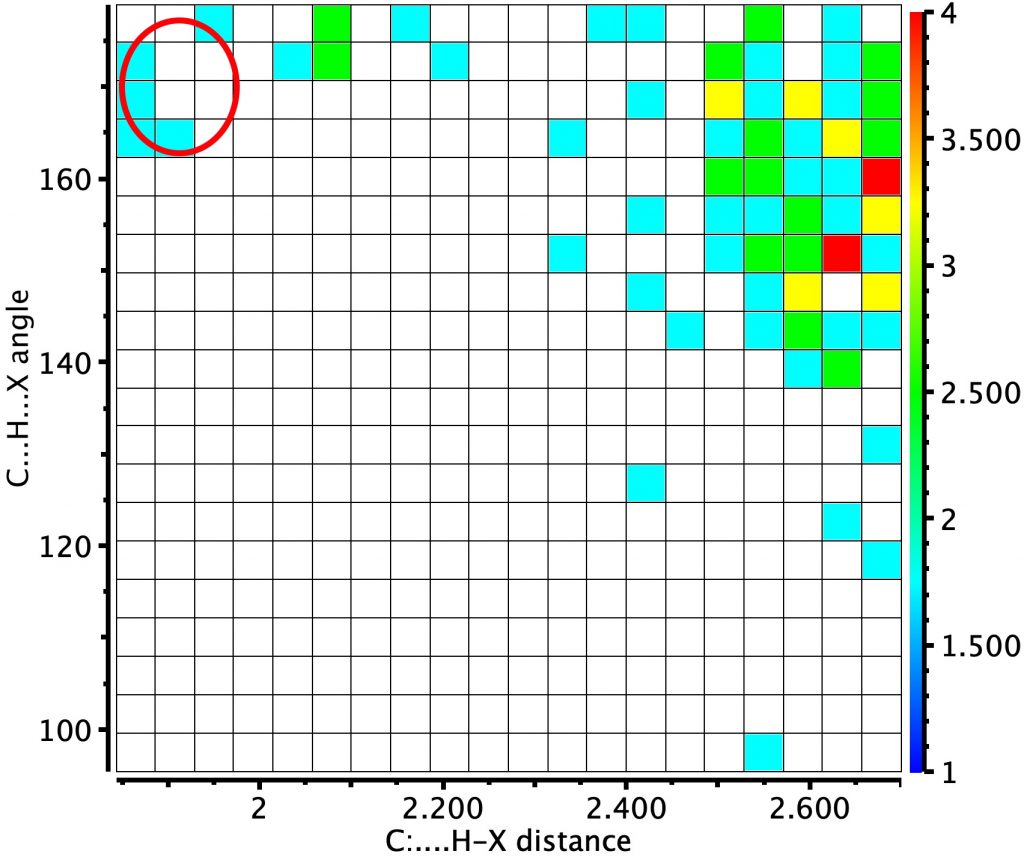A hydrogen bond donor is considered as an electronegative element carrying a hydrogen that is accepted by an atom carrying a lone pair of electrons, as in X:…H-Y where X: is the acceptor and H-Y the donor. Wikipedia asserts that carbon can act as a donor, as we saw in the post on the incredible chloride cage, where six Cl:…H-C interactions trapped the chloride ion inside the cage. This led me to ask how many examples are there of carbon as an acceptor rather than as a donor?
The basic query is constructed as above: in order to act as an acceptor, the carbon must bear a lone pair of electrons, of which a carbene is one example (Query, see DOI: 10.14469/hpc/6531). Thus we have QA=O,C,S and the central atom has only two connected atoms. When QC is any of C,N,O,F,Cl, we get the following result. The red circle corresponds to QC=O.
The shortest example of these is shown below, with a C:…HO distance of 1.91Å nominal but about 0.1Å shorter if corrected for the over-short H-O bond (Data DOI: 10.5517/ccvm80q)[1]
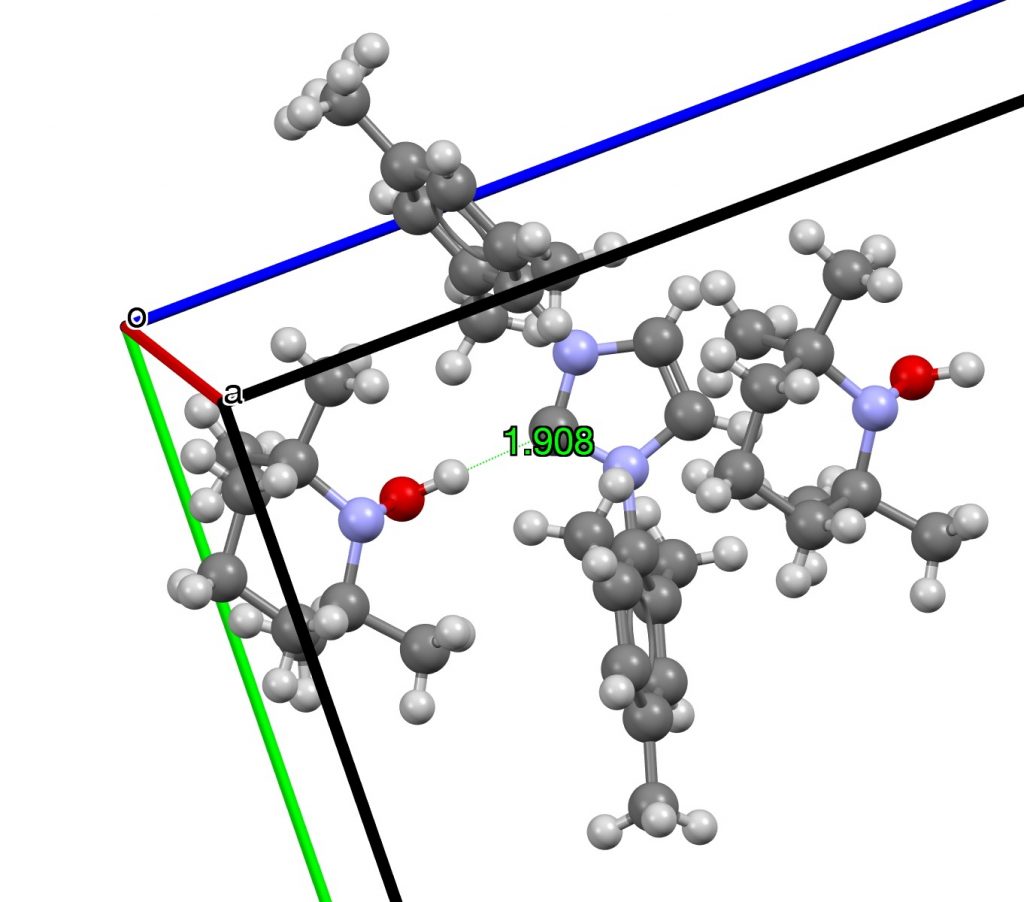
Click image to view 3D
The shortest C:…HN example is shown below with a distance of 2.07Å (DOI: 10.5517/ccdc.csd.cc21tzql)[2]
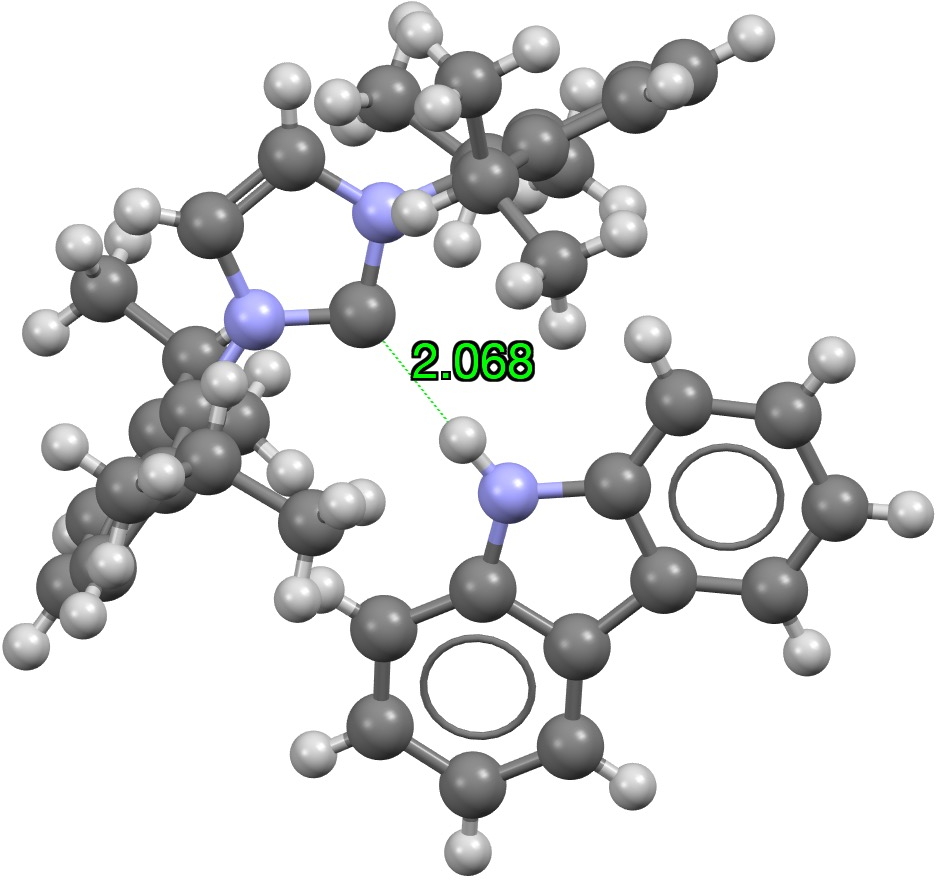
Click on image to view 3D model
Finally C:…HC, of which there are many in the region of 2.5Å, with the shortest example being 2.17Å[3]
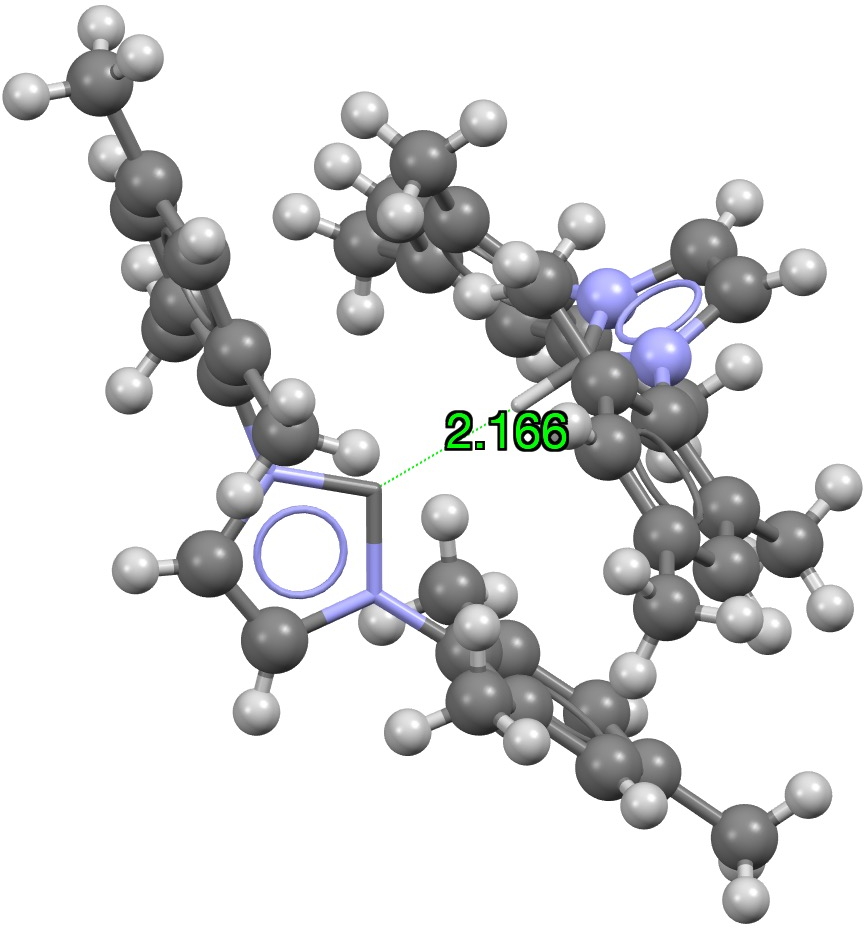
Click on image to view 3D model
To round this off, N≡C:…HX, of which a nice example is (DOI: 10.5517/ccs7whc)[4]
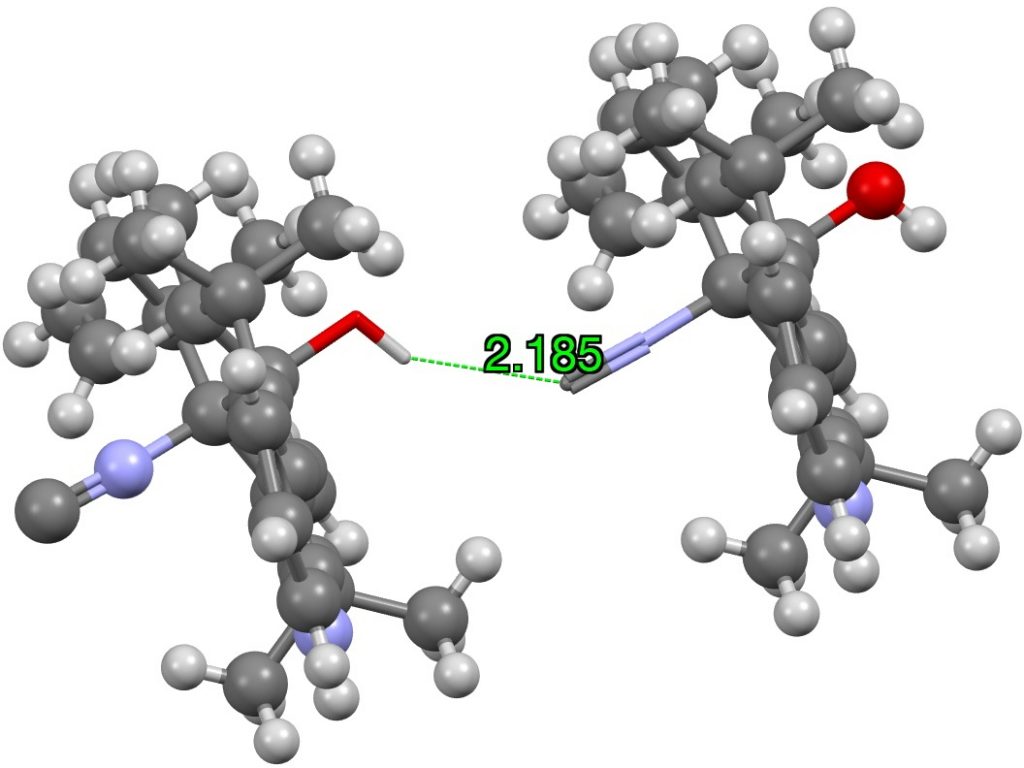
Click on image for 3D model
From which we conclude that carbon as a hydrogen bond acceptor exhibits a diversity of forms, often with surprisingly short distances! I guess the wikipedia article needs updating.
References
- N.A. Giffin, M. Makramalla, A.D. Hendsbee, K.N. Robertson, C. Sherren, C.C. Pye, J.D. Masuda, and J.A.C. Clyburne, "Anhydrous TEMPO-H: reactions of a good hydrogen atom donor with low-valent carbon centres", Organic & Biomolecular Chemistry, vol. 9, pp. 3672, 2011. https://doi.org/10.1039/c0ob00999g
- J.M. Kieser, Z.J. Kinney, J.R. Gaffen, S. Evariste, A.M. Harrison, A.L. Rheingold, and J.D. Protasiewicz, "Three Ways Isolable Carbenes Can Modulate Emission of NH-Containing Fluorophores", Journal of the American Chemical Society, vol. 141, pp. 12055-12063, 2019. https://doi.org/10.1021/jacs.9b04864
- C. Jones, D.P. Mills, and R.P. Rose, "Oxidative addition of an imidazolium cation to an anionic gallium(I) N-heterocyclic carbene analogue: Synthesis and characterisation of novel gallium hydride complexes", Journal of Organometallic Chemistry, vol. 691, pp. 3060-3064, 2006. https://doi.org/10.1016/j.jorganchem.2006.03.018
- S. Mo, A. Krunic, B.D. Santarsiero, S.G. Franzblau, and J. Orjala, "Hapalindole-related alkaloids from the cultured cyanobacterium Fischerella ambigua", Phytochemistry, vol. 71, pp. 2116-2123, 2010. https://doi.org/10.1016/j.phytochem.2010.09.004
